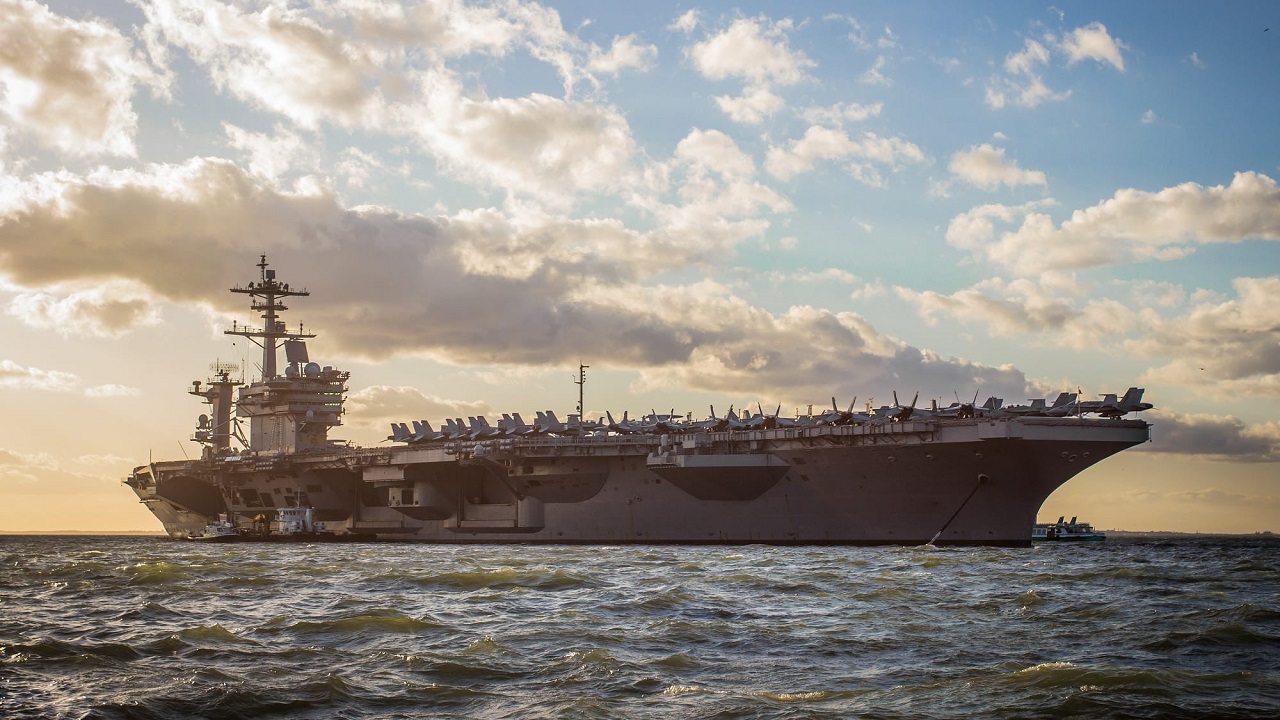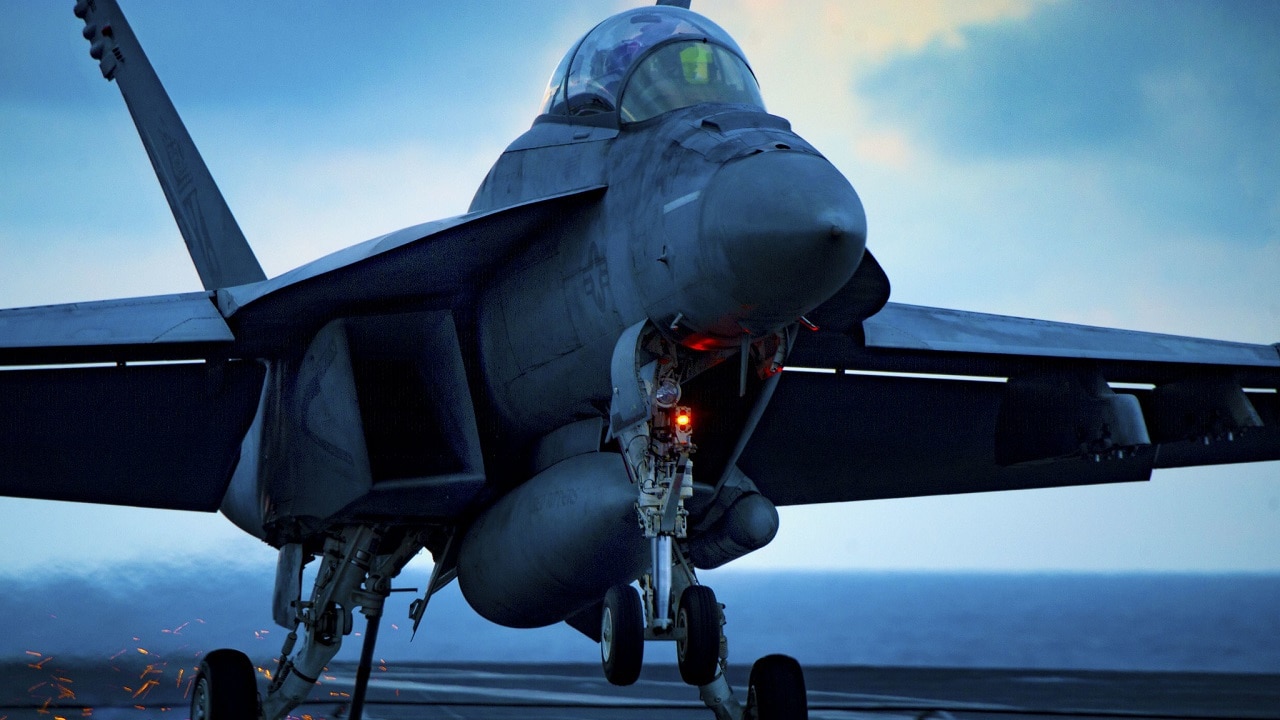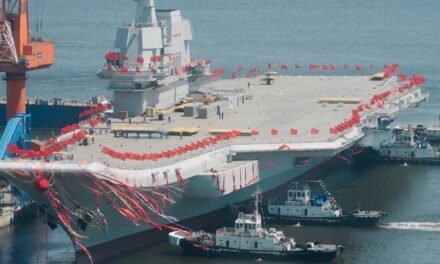We support our Publishers and Content Creators. You can view this story on their website by CLICKING HERE.
Key Points: The U.S. Navy’s current fleet of 11 aircraft carriers faces strategic debates amid rising costs, maintenance challenges, and growing threats from China’s expanding navy and anti-ship missile capabilities.
-While carriers remain critical for power projection and crisis response, their vulnerabilities to modern weaponry spark calls to prioritize submarine development for greater survivability in contested waters.
-Proponents argue for delaying new carriers to fund submarines, destroyers, and frigates, citing the need for cost-effective deterrence and adaptability to evolving warfare.
-The balance between maintaining carrier dominance and enhancing fleet diversity is central to U.S. naval strategy.
Why America’s Aircraft Carrier Strategy Faces Modern Challenges
It’s great to be a country with a fleet of aircraft carriers. The floating air bases can project power, improve national unity, and increase military might throughout the globe, especially if they are nuclear-powered. A political leader can always order a carrier strike group to a restive region and be assured that dozens of aircraft can take off and land at a moment’s notice to strike military targets deep into the interior of adversarial countries.
But just how many aircraft carriers does the U.S. Navy need for the long-haul considering threat from, well, what seems like everywhere in 2024?
The Money That Must Be Invested Is Sizable
Surely these carriers come with a high cost. The U.S. Navy’s new Gerald R. Ford super carrier has at least a $13.3 billion price tag. The other expense is maintenance. It always seems like at least one American flat-top is out of action for some type of re-fit or series of repairs.Has the Aircraft Carrier Become Obsolete?
The other problem is that some analysts think the carrier is obsolete. Anti-ship missiles can form a protective screen against carrier strike groups and create the strategy of anti-access area denial – a gambit that China is executing so deftly in the Indo-Pacific, specifically in the East and South China Seas.
From 2017 – The aircraft carrier Pre-Commissioning Unit (PCU) Gerald R. Ford (CVN 78) pulls into Naval Station Norfolk for the first time. The first-of-class ship – the first new U.S. aircraft carrier design in 40 years – spent several days conducting builder’s sea trails, a comprehensive test of many of the ship’s key systems and technologies. (U.S. Navy photo by Matt Hildreth courtesy of Huntington Ingalls Industries/Released)
Aircraft Carriers: Let’s Keep the Numbers Where They Are
These two requirements for American aircraft carriers – unit cost and maintenance – are reasons to keep the number of total flat-tops at 11 and not build more, despite the advantages they have. China, however, is a problem.
Beijing boasts the navy with the largest number of ships in the world. The Chinese also have three functioning aircraft carriers. They are building a nuclear-model now and would like six within the next decade.
But Sometimes There Are Not Enough
This means that the U.S. Navy must make the Ford-class carriers the best in the world to keep up. Perhaps the number of American carriers is enough for deterrence. But sometimes 11 is not adequate. The United States, at one point, had zero carrier strike groups in the Pacific Ocean in August, leading observers to conclude that the Navy would not be ready for a Chinese military operation against Taiwan. This would be one example where the United States could use at least one more carrier.

USS George HW Bush Aircraft Carrier. Image Credit: Creative Commons.
More carriers could improve deterrence, crisis response, flexibility, shows of strength, and overall optimization of naval strategy. He who controls the high seas wins. With the large numbers of ships in the Chinese Navy and Coast Guard, more U.S. carriers would make sense despite the limitations of U.S. shipyards, snarled supply chains, and lack of workers.
Supporters Cite the Strengths
A carrier advocate, Rear Admiral Roy Kelley, wrote in Defense News that “a carrier strike group, by its mere presence, can shape events in the nation’s favor. When deterrence gives way to war, a naval force enabled by an aircraft carrier and its air wing comes to the fight trained and equipped across a full range of missions, ready to control the sea, conduct strikes from the sea, and maneuver across the electromagnetic spectrum and in cyberspace. No other naval force fields a commensurate range and depth of combat capabilities.”
How About More Submarines Instead?
Keeping the number of carriers constant would allow the Navy to build more submarines, destroyers, and frigates with money saved from building an additional flat-top. Submarines will especially be helpful against China should a shooting war occur. U.S. nuclear-powered and nuclear-equipped subs and fast attack models have their own brand of deterrence and efficacy. Firing land-attack or anti-ship cruise missiles could be decisive. The subs are challenging to detect and defend against. They have their own cost issues and maintenance requirements but sacrificing one new carrier to build two more submarines has advantages in naval tactics, operational art, and strategy.

A Lockheed Martin Corp’s F-35C Joint Strike Fighter is shown on the deck of the USS Nimitz aircraft carrier after making the plane’s first ever carrier landing using its tailhook system, off the coast of California, November 3, 2014. REUTERS/Mike Blake (UNITED STATES – Tags: TRANSPORT MILITARY)/File Photo
Anti-ship Missiles Are Dangerous
To be frank, I am in favor of delaying the building of the United State’s next carrier until we know more about how 21st-century naval warfare will shape up. Use the war in Ukraine as an example. The Ukrainians have no navy but have the anti-ship missiles and drones to take out the best of Russia’s Black Sea fleet – around 15 of Vladimir Putin’s warships have been sunk outright.
Anti-ship missiles would not eliminate a submarine unless it was caught on the surface. So, I favor keeping the number of carriers in the United States constant and investing in other types of new shipping, particularly submarines, until the Navy is more confident about survivability in a shooting war. The stakes are too high and the cost for new and existing carriers is considerable whether building new ones or maintaining the existing fleet.
Let’s slow down on new aircraft carrier development and focus on maintaining the current number. Losing one in battle would be disastrous, while submarines are more survivable. This could make a difference in the next naval war.

ATLANTIC OCEAN (July 4, 2018) An F/A-18F Super Hornet assigned to the “Red Rippers” of Strike Fighter Squadron (VFA) 11 sits on the flight deck of the Nimitz-class aircraft carrier USS Harry S. Truman (CVN 75). Harry S. Truman is deployed as part of an ongoing rotation of U.S. forces supporting maritime security operations in international waters around the globe. (U.S. Navy photo by Mass Communication Specialist 3rd Class Rebekah A. Watkins/Released).
About the Author: Dr. Brent M. Eastwood
Brent M. Eastwood, PhD, is the author of Don’t Turn Your Back On the World: a Conservative Foreign Policy and Humans, Machines, and Data: Future Trends in Warfare, plus two other books. Brent was the founder and CEO of a tech firm that predicted world events using artificial intelligence. He served as a legislative fellow for U.S. Senator Tim Scott and advised the senator on defense and foreign policy issues. He has taught at American University, George Washington University, and George Mason University. Brent is a former U.S. Army Infantry officer. He can be followed on X @BMEastwood.

 Conservative
Conservative  Search
Search Trending
Trending Current News
Current News 





